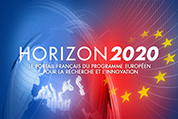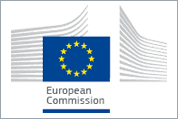ESR2.2: Ivan KARPOVWave-borehole interaction

Ivan KARPOV attained both BS and MS degrees in Novosibirsk State University, Russia. His bachelor's project was devoted to description of noise waves inherent to vertical seismic profiling. In his master's thesis, Ivan proved a conceptual possibility to asses varying fracturing direction in reservoirs with performing a polarization analysis of vertical seismic profiling data.Currently, Ivan is a PhD candidate at NTNU, Norway. His PhD research encompasses modeling and analysis of waves in presence of subvertical cylindrical inhomogeneities.
Research interests: seismic exploration, wave propagation, anisotropy, forward modeling.
Main host institution:
Supervisor:
Boerge Arntsen (borge.arntsen @ ntnu.no)
Secondment institution:
- Statoil (Stavanger, Norway)
- CNRS (France)
- Institut für Geophysik, Eidgenössische Technische Hochschule (Zurich, Switzerland)
Objectives:
The student will perform a combined numerical/physical experiment to record and analyse elastic wave fields scattered from a vertical borehole in a layered medium. The analysis will emphasize signal detection and recovery at large distances (compared to wavelength) from the borehole.
Expected results:
The project will deliver measurements of elastic wave fields scattered from a borehole embedded in a layered medium with a variety of source/receiver geometries and wavelengths; such a database will be of great value as a tool to validate numerical methods designed to model seismic/acoustic wave propagation in media with sharp interfaces, scattering obstacles, etc. Through a combined physical/numerical experiment, the ESR will evaluate the detectability of man-made boreholes illuminated by conventional seismic data; his or her results will in turn serve to determine whether naturally occurring thin vertical pipes can indeed be imaged at seismic wavelengths, as suggested by observations on commercial seismic data. The ESR will analyse different wave modes allowing for borehole detection at large distance, working on data generated by a wide range of different source-receiver geometries, and taking advantage of recently introduced isometric sampling. A key research aspect of this theme will be to take advantage of recent advances in 3D printing technology to construct the required models of the highest degrees of complexity.
international conferences:
EAGE - 79th European Association of Geoscientists & Engineers Conference & Exhibition 2017, Paris, 12-15/06/2017: Acoustic response of thin cylindrical structures piercing horizontally stratified mediasee all WAVES Posters & Flyers
Key Facts
- Coordinated by Université Pierre et Marie Curie
- 15 participating partners
- 6 European countries and the USA
- 15 trained fellows
- Project budget: 3 227 952.96€
- Project duration: 4 years
- WAVES is a European project funded by the European Union’s Horizon 2020 research and innovation programme under the Marie Slodowska-Curie grant agreement n° 641943.
Contact
Coordinator:
Lapo Boschi (lapo.boschi @ upmc.fr)
Project Manager
Fanny Schultz (fanny.schultz @ sorbonne-universite.fr)



